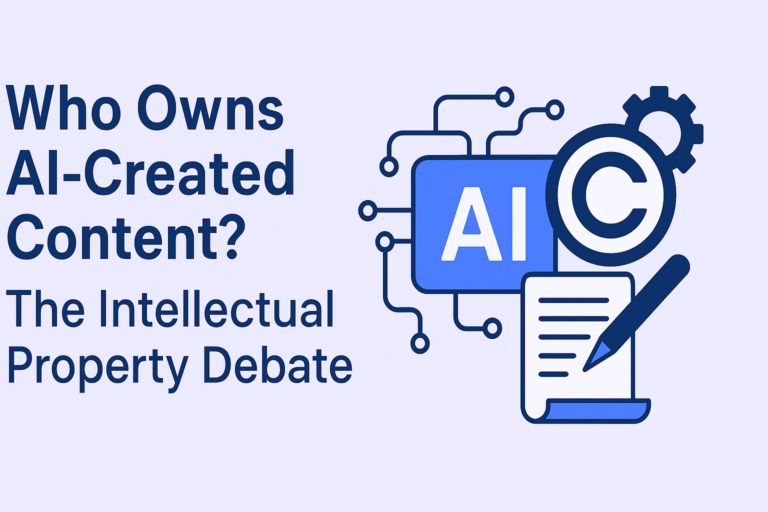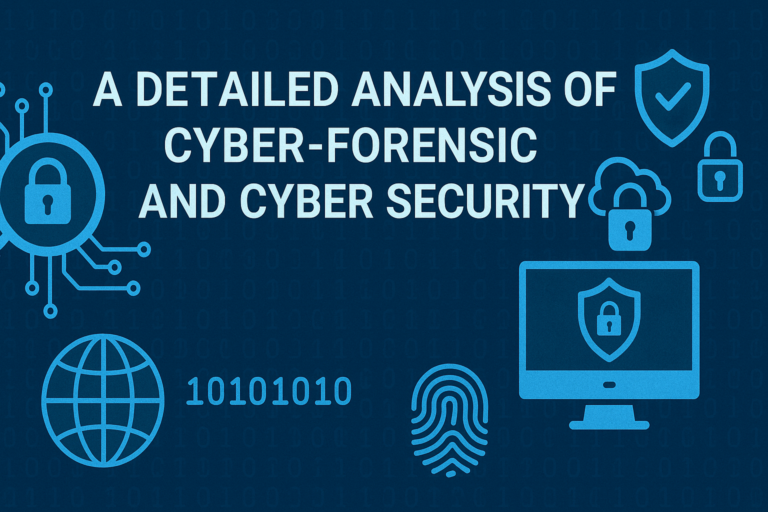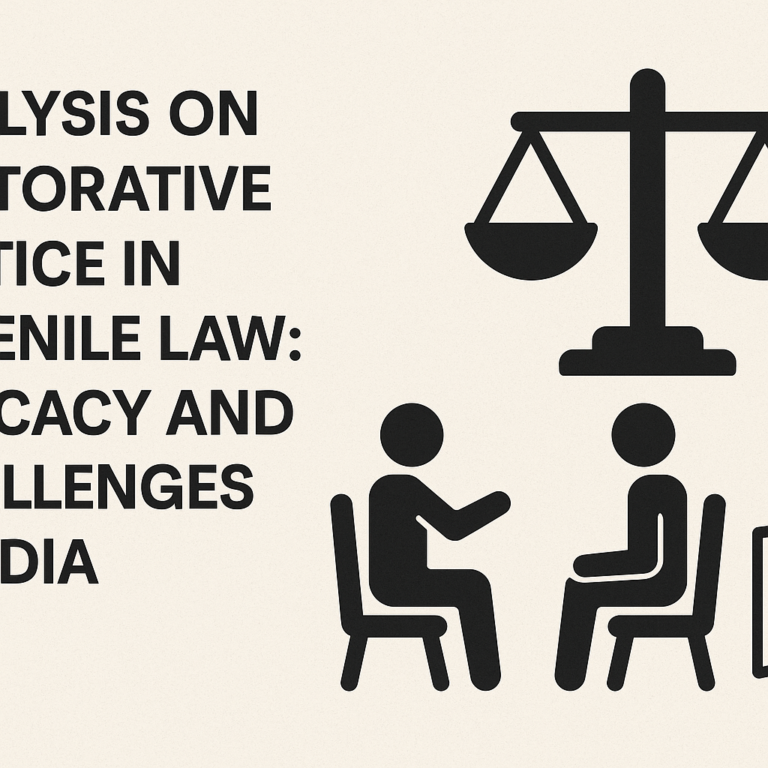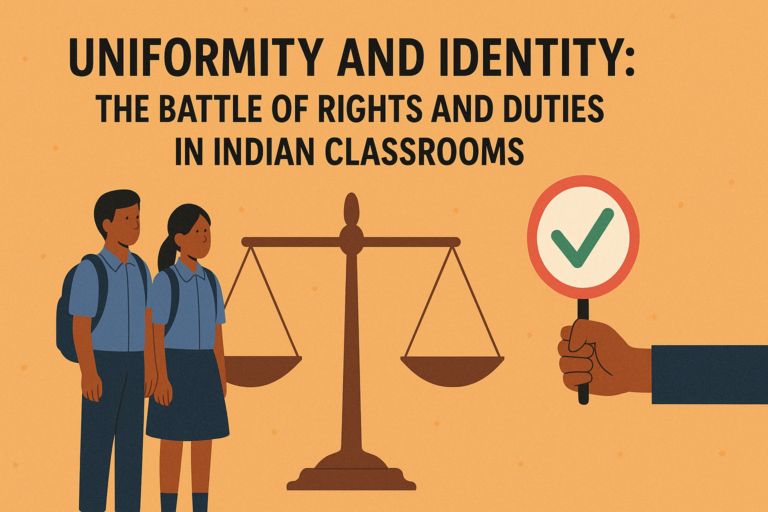
This article has been written by I am Sumit kumar, a 4th year student at Law college Dehradun, faculty of Uttaranchal university.

ABSTRACT
In our interconnected digital age, cyberspace has become a cornerstone in our daily lives, connecting us across communication, business transactions, entertainment, and even decision-making for governments. Yet, as cyberspace grows and changes, it also faces significant challenges such as cyber-attacks, protecting our personal information, and legal issues that arise from this evolving landscape.
Securing cyberspace and protecting digital infrastructure from malicious attackers who aim to exploit vulnerabilities is crucial. Cyber security efforts involve a variety of measures, such as identifying and preventing threats, responding to incidents, educating and training on cyber security, adhering to regulations, and collaborating between organizations and government. By implementing effective cyber security measures, businesses can reduce cyber security risks, improve their ability to withstand cyber threats, and safeguard sensitive information.
Landmark cases like “Shreya Singhal v. Union of India” and “K.S. Puttaswamy (Retd.) v. Union of India” have influenced how cyberspace is regulated. These cases have focused on protecting freedom of speech, privacy, and digital freedoms, making it clear that it’s essential to support basic rights in the digital realm. To deal with the problems presented by the internet age, laws need to keep up with the times.
Howdy, you all! Welcome to your page of knowledge. You will find different legal blogs, the latest news, current affairs, and many more on this channel. This is the initiative to develop the knowledge of the law in the world, especially for you.
INTRODUCTION
The internet is a digital place made by linked computers. It includes the big part of the web, where info moves freely between places. In this place, people talk, share, and do things using gadgets connected to the web. It has many places like sites, social networks, online shops, and groups. The internet helps info, thoughts, and things move all over the planet, letting folks work together and link up. It’s a changing place made by tech, actions, and cultures. But, the internet brings hard things too, like safety risks, secret worries, and gaps between folks. Still, it’s a key part of today’s world, pushing new stuff, talks, and cash flow.
NAVIGATING CYBERSPACE: UNDERSTANDING THE INTERSECTION WITH INDIAN LAW
In India, using the internet requires understanding several legal areas: Data privacy: protecting personal information; Cyber security: protecting computer systems; Intellectual property rights: copyrights, trademarks, etc.; E-commerce regulations: rules for online shopping; Online defamation laws: protecting against harmful online speech. India has specific laws that govern online activities: Information Technology Act (2000); Personal Data Protection Bill (2019).
- The Information Technology Act (IT Act) plays a vital role in regulating the digital landscape, known as “cyberspace.” Its key provisions include:
- Recognition of Electronic Documents: The IT Act treats electronic documents, digital signatures, and electronic records as legally valid, giving them the same weight as physical documents. This allows for seamless electronic transactions and legal agreements.
- Cybercrimes and offences: The Information Technology Act (IT Act) establishes a framework against cybercrimes, including hacking, identity theft, phishing, and cyber-terrorism. It defines punishments for committing these offenses and provides guidelines for investigating and prosecuting them. The act seeks to prevent and penalize unlawful activities within the digital realm.
- Data protection and Privacy: The original IT Act did not include specific regulations for data protection and privacy, subsequent adjustments and guidelines have partially addressed these concerns. For instance, the IT (Reasonable Security Practices and Procedures and Sensitive Personal Data or Information) Rules of 2011 establish security requirements for businesses handling sensitive personal information.
- Data protection laws are essential rules that govern how companies and other entities gather, store, use, and share people’s personal information in the online world. They are in place to protect people’s privacy and make sure that their information is handled safely and responsibly by those who have it.
In the digital realm, where personal data flows freely, data protection laws serve as a guiding framework to safeguard individuals’ privacy and regulate the utilization of their information. These laws impose specific guidelines and mandates on businesses, addressing aspects such as: Obtaining explicit consent before collecting personal data, limiting the collection of data to what is essential for specific purposes, Ensuring data security measures to protect against unauthorized access, Notifying individuals in case of data breaches, empowering individuals with rights to access, correct, and delete their personal data.
- Cyber security initiative in the digital world, where information travels effortlessly across linked networks, cyber security efforts are vital for protecting the reliability, privacy, and accessibility of data and services. These efforts include a range of strategies, technologies, and best practices aimed at minimizing cyber security risks and making systems more resistant to cyber-attacks.
- Prevention from threat: Deploying technologies that monitor and defend against malicious cyber activities like viruses, data-encrypting attacks, email scams, and unauthorized access by insiders.
- Empower Users with Cyber security Knowledge: Equip users and employees with the knowledge to navigate cyberspace safely. Highlight prevalent cyber security threats to increase vigilance. Offer training programs to instill sound cyber security habits.
- Public and Private ventures: Working together with government entities, businesses, and international organizations to exchange intelligence about threats and work together to respond to incidents, and improve cyber security protection worldwide.
- Investigating cybercrimes in the online world is a complex and ever-changing endeavour. It involves using digital forensic tools, cyber security measures, and legal processes to find, examine, and pursue criminal activities that happen on the internet. As technology advances, cybercriminals get smarter, so investigations need to be proactive and include different methods to be effective.
Digital forensics is crucial in cybercrime investigations. It involves finding and studying digital evidence. Using specialized techniques and tools, investigators extract data from computers, phones, network records, and other digital devices. They make copies (forensic images) of storage devices, restore erased files, and look at metadata to recreate digital clues. Digital forensic professionals follow strict rules to protect the evidence’s reliability and ensure its validity in court.
Cybercrime investigations face difficulties due to the ephemeral nature of digital evidence. Unlike tangible evidence, electronic data is prone to rapid alterations, deletions, or concealment, necessitating swift and systematic actions by investigators. Furthermore, the global reach of cyberspace introduces legal challenges as cybercriminals can traverse international boundaries while evading consequences. To overcome this hurdle, law enforcement organizations partner with international agencies, sharing information and resources to pursue and arrest cybercriminals.
To safeguard the online world and protect the digital backbone of our society, cyber security initiatives are crucial. By allocating resources to enhance cyber security and instilling a security-conscious mind set, stakeholders can reduce cyber threats, strengthen confidence in online activities, and create a secure digital ecosystem for everyone.
EXPLORING LEGAL PRECEDENTS: NOTABLE CASES IN CYBERSPACE
In USA vs. Microsoft Corporation[1] case was about Microsoft including Internet Explorer with Windows, raising concerns about fair competition and consumer choice online. The court said Microsoft broke antitrust laws, and put limits on its business to boost competition and innovation. This big case affected how we control the tech industry and showed how hard it is to govern the web. It reminded us to keep an eye on rules and change them as new digital issues come up. Also, it showed the need to balance big market power with what’s good for consumers and make a space where new things and competition can grow. In the end, this fight affected how we watch over the web and push for a fair and tough digital market for everyone.
In Google Spain vs. AEPD and Mario Costeja Gonzalez[2] made a rule called “right to be forgotten” online. In 2014, the Court of Justice of the European Union said that folks can ask to take down links to old, wrong, or not key info about them from search results. This made search engines follow EU laws on data protection. The case led to talks on how to mix privacy rights and online free speech. It set a model for folks in the EU to ask to hide search results that break their privacy. This changed data rules and web privacy worldwide.
In Shreya Singhal vs. Union of India[3] case is about laws and rights in cyberspace. It deals with online speech and expression. Section 66A of the Information Technology Act was a rule against speech in cyberspace. It affected internet users’ rights as it could stop free speech and limit online talk. The Supreme Court of India said Section 66A is against the law. This shows how important it is to let people talk freely online. It also shows that laws for cyberspace must protect basic rights, even as tech grows. This case is a big step in making rules for the internet in India. It cares about free speech, privacy, and rights online.
In K.S. Puttaswamy (Retd.) v. Union of India[4] is significant for cyberspace because it established the right to privacy in the digital world. In today’s interconnected society, cyberspace is essential for communication, transactions, and social interactions. This case recognized that individuals have a basic expectation of privacy in cyberspace, where personal information is widely gathered, stored, and transmitted. Through social media, online marketplaces, and other digital services, people routinely share significant personal data in cyberspace. The decision in this case clarified that individuals have a valid expectation of privacy in their digital communications and online activities.
CONCLUSION
To protect cyberspace, we need to consider various aspects. We need to protect digital systems and data by finding threats, responding to incidents, and making people aware of security risks. Laws and regulations should protect people’s privacy and ensure organizations handle data responsibly. Court cases involving cyberspace issues, like free speech and privacy, help shape laws and regulations. It’s important to update these laws for the digital age.
To create a safer world, it’s essential that everyone involved takes responsibility for cyber security, data protection, and legal rights. Governments, businesses, groups, and individuals need to work together to face new challenges, encourage progress, and ensure that everyone’s rights and interests are protected in cyberspace. This includes investing in strong cyber security defences, following data protection laws, and respecting fundamental rights in legal proceedings. Ultimately, a trustworthy and resilient digital environment requires collaboration and a commitment to protect the rights and interests of all users online.
[1] United States of America vs. Microsoft Corporation 253 F. 3d 34 (D.C. Cir. 2001)
[2] Case 131/12, Google Spain SL, Google Inc. vs. Agencia Española de Protección de Datos and Mario Costeja
González [2014] ECR I-000, nyr.
[3] Shreya Singhal vs. Union of India AIR 2015 SC 1523
[4] Justice K.S.Puttaswamy(Retd) vs. Union Of India (2017) 10 SCC 1







